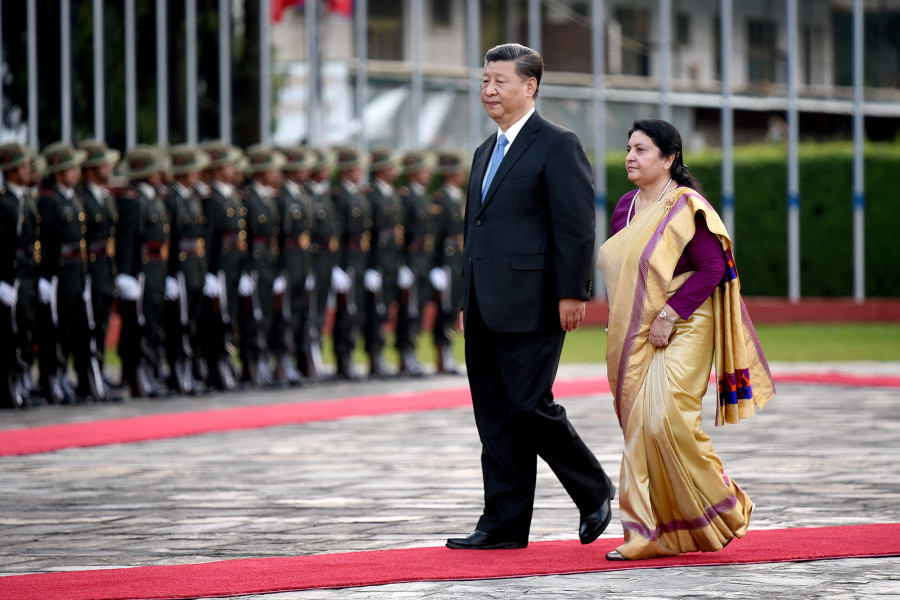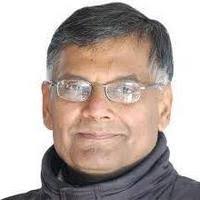Columns
The decade of lumpen
The person of the decade has to be Prime Minister KP Oli, whereas the person to watch closely in the upcoming one is President Bidya Devi Bhandari.
CK Lal
The world looks to be on the edge of a precipice. Believed to be unpredictable, if not outright unstable, the president of the United States had the top Iranian General Qassem Suleimani killed in a targeted airstrike. A red flag has since been unfurled atop the Jamkaran Mosque in the Shiite holy city of Qom in Iran. It signifies that revenge is now the duty of the Iranian regime.
There is a reason The Guardian questioned in its editorial whether the UK has gone from being a poodle to becoming a lapdog of the United States. The tone is undoubtedly harsh, but Prime Minister Boris Johnson has little moral authority to urge President Trump to ‘de-escalate’ tension when the leading Brexiter of the United Kingdom wasn’t even informed of the US decision.
All eyes are on President Xi Jinping, the possible ruler for life of the People’s Republic of China. The Chinese strongman, however, is battling multiple crises such as trade war with the US, protests in Hong Kong and prosecution of Muslim Uighurs in Xinjiang. Analysts concede that the main beneficiary of the US-Iran crisis could well be Russia. But for all his diplomatic chutzpah, President Vladimir Putin needs the European Union on board to make a meaningful difference in the mess of West Asia.
Closer to home, the Indian Prime Minister Narendra Modi seems to have abdicated all executive authority in his second term of office in favour of his alter ego, Home Minister Amit Shah. Premier Modi’s promise of ‘sabka saath, sabka vikas, sabka vishwas’ no longer resonates as Shah pushes the Hindutva agenda of RSS with panacea. Lynching, vigilantism and mob violence is openly condoned, if not outright sponsored, by the Hindutva establishment. All of this occurs in the name of the people.
The Nepali prime minister, and the ruling Nepal Communist Party (NCP), hasn’t yet travelled as far as his Indian counterpart, but the direction and speed are unmistakable. The draconian Information and Technology Bill is clearly intended to preempt any criticism of unprecedented concentration of authority in the Prime Minister’s Secretariat.
Supremo Oli had already reduced the parliament into a rubber stamp. A committed judiciary and semi-judicial powers in the hands of the executive branch of the government will complete the picture. Following in the footprints of Prime Minister Modi in India and President Gotabaya Rajapaksa of Sri Lanka, Prime Minister Oli seems fully committed to take Nepal into the realm of dystopian democracy, where naked majoritarianism rules the roost.
How has the world come to this? There could be many explanations. Perhaps one of those is the extraordinary emergence of lumpen—the lumpenproletariat, the lumpenbourgeoisie and lumpen capitalists—as powerful political forces of world politics.
Astroturf movements
Karl Marx correctly intuited that the ‘declassed, degraded or degenerated’ elements of the proletariat were prone to manipulation by fascists. Political sociologist Saad E Ibrahim has identified lumpen capitalists as people who ‘make money rather than earning it’, function as ‘intermediaries between international exporters and their local agents’ and are ‘neither fully productive, nor completely parasitic’. Ergo, they survive and thrive under the patronage of the regime in power.
Lumpenbourgeoisie is a somewhat loose term in comparison. Dependency theorist Paul E Baran uses it to mean upper- and middle-class agents of colonial masters—the comprador bourgeoisie. Sociologist C Wright Mills grouped them into the ‘White Collar’ category. Economic historian André Gunder Frank popularised it as a near-synonym of comprador that reinforces what he illustratively calls the lumpen development.
An academic synthesis of scholarly definitions lies outside the purview of a newspaper column. Suffice it to say that the lumpenbourgeoisie as a class consists of the disillusioned group of neoliberals that become xenophobic, jingoistic, chauvinistic and nationalistic in response to unexpected challenges to their cultural hegemony.
A group of ‘libertarian megadonors’ in the USA cleverly used ‘White Fright’ to incite the Tea Party movement which ultimately resulted in the installation of a lumpen capitalist in the White House. The Hindutva upsurge in India began with a callisthenics televangelist and a brilliant business person masquerading as a yogi in saffron going on a hunger strike to bring back black money. The urban lumpenbourgeoisie of India roared in approval and the oppressor of minorities in Gujrat made it to the throne of New Delhi.
In Thailand, the monarchist Yellow Shirts succeeded in re-establishing the primacy of royal-military supporting Siamese in national politics. Religious nationalism of militant monks has always been an influential factor in the politics of Sri Lanka and Myanmar. In Nepal, the lumpenbourgeoisie largely consists of what has come to be termed the Khas Arya supremacists.
White Shirts
No two regressive political movements are exactly alike. Possibilities of the Rhododendron Revolution began to wither with the infamous Katuwal Kanda, when a ceremonial president used extra-constitutional powers to reinstate the lawfully dismissed army chief. It precipitated the unceremonious exit of the first elected prime minister of the new republic from office.
The tipping point, however, was reached with the so-called peace rally in May 2010, when the lumpenbourgeoisie gathered in strength in the heart of the city in what was clearly a case of astroturfing for the restoration of Khas-Arya supremacy. Pushpa Kamal Dahal buckled, Upendra Yadav cowered, Subhas Nembang obliged his party bosses, and the dream of the promised ‘New Nepal’ died. The following decade has merely completed the last rites of the progressive imagination.
In order to describe the lumpen literati invested in the perpetuation of the status quo, BP Koirala had used a Nepali term ‘sukila-mukila’, which can roughly be translated as ‘well-dressed and well-fed’. The Maoist Supremo Dahal had used the expression to deride participants of the May 2010 movement. When he realised that he couldn’t beat them, he lost little time in joining them.
The rest of the decade unfolded in a predictable manner. The White Shirts—consisting largely of the lumpenbourgeoisie marshalled by the lumpen capitalists of Nepal to sideline Janajatis and keep Madhesis in their places—began to play the politics of the non-political. Politics of the non-political, however, is a complete misnomer. It implies taking a seemingly impartial position without openly declaring its political preferences.
In an Orwellian twist of events, the chief justice that had declared the further extension of the constituent assembly unconstitutional became the chief executive through an extra-constitutional settlement to conduct elections for a new legislature. With predictable results, the electoral mandate was conflated with a popular mandate, a majoritarian constitution was ‘fast-tracked’ in the middle of the Gorkha Earthquake aftershocks, and Madheshi protests were ruthlessly suppressed.
The dotard of Baluwatar failed to see that communist unity was the underlying theme of the 16-Point Conspiracy and meekly signed on the dotted line and paid its price in the form of his own party becoming politically irrelevant. The person of the decade of lumpen is unmistakably Supremo Oli. The person to watch in the days to come? President Bidya Devi Bhandari, the Supreme Commander-in-Chief of the Nepal Army.
***
What do you think?
Dear reader, we’d like to hear from you. We regularly publish letters to the editor on contemporary issues or direct responses to something the Post has recently published. Please send your letters to [email protected] with "Letter to the Editor" in the subject line. Please include your name, location, and a contact address so one of our editors can reach out to you.




 7.12°C Kathmandu
7.12°C Kathmandu















